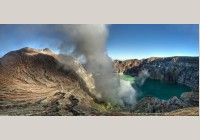Ilocano
Naimbag nga isasangpet – Welcome
Ilocano, also known as Ilokano and Iloko, is a member of the Malayo-Polynesian branch of the Austronesian language family. It is the third largest language of the Philippines, after Tagalog and English. The name Ilocano come from i– ‘from’ +looc ‘bay’ + –ano Spanish ‘native of,’ thus ‘people of the bay’.
..
Indonesian (Bahasa Indonesia)
Selamat datang – Welcome
Indonesian (Bahasa Indonesia ‘language of Indonesia’) is a member of the Malayo-Polynesian branch of the Austronesian language family. Bahasa Indonesia is a standardized dialect of Malay which had been used as a lingua franca in the Indonesian archipelago for centuries, and which achieved the status of an official langu..
International Languages
Languages of the United Nations (UN)
The original official languages of the UN were English, Chinese, French, and Russian, the languages of the permanent members of the UN Security Council. The choice was largely political.
English was widely used as an international language, as it was the dominant language of the United States, a superpower.
Chines..
Inuit/Inupiaq
Tunngasugit – Welcome
The term Inuit (plural of Inuk ‘man’) refers to a group of indigenous peoples of the circumpolar regions of Alaska, Canada, and Greenland. The term is also used for the continuum of language varieties spoken by the Inuit people. Inuit is a group of five closely related languages that belong to the Eskimo branch of the Eskimo-Aleut language fam..
Irish Gaelic
Céad míle fáilte
Irish Gaelic (Gaeilge nah Eireann) is a Celtic language spoken by 138,000 people as a first language, and by another 1,000,000 people as a second language in Ireland with 276,000 first-language speakers worldwide (Ethnologue).The language is sometimes referred to as Gaelic, Irish Gaelic, or Erse, but in Ireland it is simply called Irish.
Status
..
Italian
Benvenuti – Welcome
Italian belongs to the Romance branch of the Indo-European language family. Like the other Romance languages, it is a descendant of Vulgar Latin spoken by the Romans and imposed by them on the peoples under their rule. Therefore, it shares many characteristics with other Romance languages. It is spoken by 57.7 million people in Italy with a total worldwide 64 mi..
Japanese
Irasshai-masu- Welcome
Japanese (Nihongo, 日本語) belongs to the Japonic language family. It is spoken as a first language by 122 million and as a second language by over 1 million people in Japan. It is also spoken in American Samoa, Argentina, Australia, Belize, Brazil, Canada, Dominican Republic, Germany, Guam, Mexico, Micronesia, Mongolia, New Zealand, Northern Mariana Islands, Palau, Panama, Paraguay, Phili..
Jarai
Welcome
Jarai (also spelled as Jrai, Cho-Rai, Chor, Djarai, Chrai, Gia Rai, Gio Rai, Jörai, and Mthur) is a Chamic language in the Malayo-Polynesian branch of the Austronesian language family (Ethnologue). Jarai is spoken by approximately 318,000 Jarai people, predominantly in the Highlands Gia Lai province of Vietnam. It is also spoken by about 20,000 people in Cambodia, by ove..
Javanese
Sugeng rawuh – Welcome
Javanese is a member of the Malayo-Polynesian branch of the Austronesian language family. Its closest relatives are Malay, Sunda, Madura, and Bali. It is the second most spoken Austronesian language after Indonesian, and the fourteenth most widely spoken language in the world. Javanese is considered to be one of the world’s classical languages, wit..
Kabyle
Ansuf yiswen – Welcome
Kabyle (Taqbaylit) belongs to the Northern Berber group of the Afro-Asiatic language family. The name of the language is reportedly derived from the Arabic word for “tribesman”. The Kabyle-speaking areas of Algeria include the provinces of Tizi Ouzou, Béjaïa and Bouïra. About half of the population of the neighboring Sétif, Bordj Bou Arréridj&nb..
Kannada
Svaagata- Welcome
Kannada (ಕನ್ನಡ), also known as Kanarese, or Canarese, belongs to the Southern branch of the Dravidian language family. It is spoken as a first language by 38 million people and as a second language by another 9 million people in southern India, primarily in the state of Karnataka. It is also spoken in the neighboring states of Andhra Pradesh, Tamil Nadu,&nbs..
Kashmiri
Namaskar – Welcome
Kashmiri, also known as Keshur or Koshur, belongs to the Northwestern group of the Indo-Aryan branch of the Indo-European language family. It is the largest of the Dardic languages, and the only language in the Dardic group that boasts an early literary tradition. It is spoken primarily in the Jammu and Kashmir state of India. According to the 20..
Kazakh
Khosh keldiniz – Welcome
Kazakh (Qazaq tili, Қазақ тілі) is a member of the Turkic branch of the Altaic language family. Like all Turkic languages, it is believed to have descended from Chagatai, an extinct Turkic language which once served as a lingua franca in Central Asia. The word Chagatai refers to the Chagatai Khanate, the western part of the Mongol empire..
Khmer
Welcome
Khmer, also known as Cambodian, belongs to the Mon-Khmer branch of the Austroasiatic language family. It is the second most widely spoken Austroasiatic language after Vietnamese. It is spoken as a first language by 13 million people and as a second language by another 1 million people in Cambodia (Ethnologue). Additionally, it is spoken by over 1 million people in Vietnam and another 1 mill..
Khoekhoe
Welcome
Khoekhoe, also known as Nama, and Hottentot (the latter term is pejorative), belongs to the Khoe language family. It is spoken by 200,000 people in Namibia, Botswana, and South Africa by the Nama, Damara, and Haiǁom people (Ethnologue). The name Khoekhoen comes from the Nama word khoe ‘person.’
Status
Namibia
Khoekhoe ..
The Windows 7 On-Screen Keyboard is very versatile and loaded with features. To change language support just press Left-Alt+Shift – if the keyboard is configured.
Before we start on that, you may wish to install language support to bring in other features. For that see How do I install a display language?
Click the START orb and type “language”. The Start menu will include Region and Language. Click it. (Of course you can get there from the Control Panel.) In the next dialog click the Keyboards and Languages tab. The next window will look similar to this:
A long list of languages will be shown. Find the language you wish to install. Click on the + in front of the entry to expand the list. Similarly expand Keyboard. Select the keyboard language from the last options, make sure the box is checked. Then click OK. You can now see the installed languages in the Text Services and Input Languages window. You are all set.
The keyboard language in use can be seen at the right end of the Taskbar. In the illustration here the current language is RU – Russian. To switch to another language press Left-Alt+Shift. On successive presses this will cycle through the available languages (that are set up as described above).
NOTE: Make the keyboard selection when an application using keyboard input is open. You can make a different selection in another application. The keyboard selection is “sticky” – switching to the other application will also switch the keyboard selected in that application. This makes working in different languages really easy.
When the Language Pack is installed for a supported language, the On-Screen Keyboard offers a very nice feature: auto-complete options. Not all languages are supported in this way. English is, so is German. Auto-complete is not supported for Russian.
In this illustration two instances of WordPad are running (hold down the Shift key when selecting a program to open another instance). The keyboard was set for Russian in one and German in the other. Note the auto-complete option offered above the normal keys. The selection is refined as additional letters are selected. Auto-complete is not active when using the hardware keyboard, it only works with the On-Screen Keyboard.
Windows 7 can display characters and other features of a wide range of languages. Support for several languages may be installed on your computer. To add another language, proceed as follows:
Click START > Control Panel >
Clock, Language, and Region
On Region and Language click Install or uninstall display languages
In the next dialog click Install display languages.
The next window asks you to chose the method of installation.
Click Launch Windows Update. Note the line about optional updates. In the illustration here it says “35 optional updates are available”. It may be different on your computer. Click that phrase. You will be offered a choice of Language Packs.
You can chose more than one Language Pack. Click to select. The click OK.
The next choice is to install:
Click Install updates.
The download and installation process may take a long time.
When the process finishes your Language Pack or Packs are installed.















